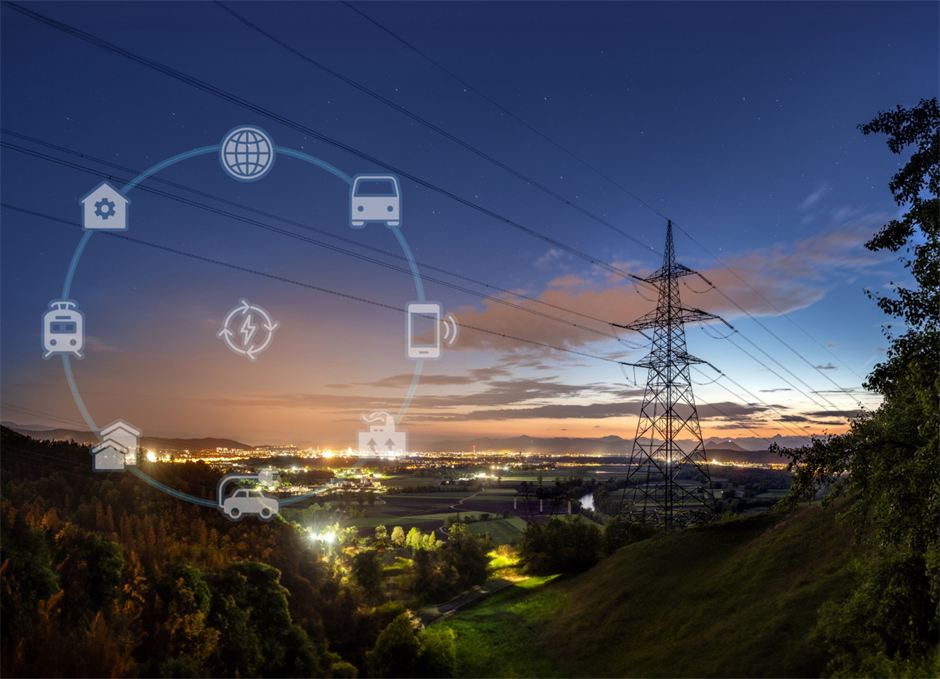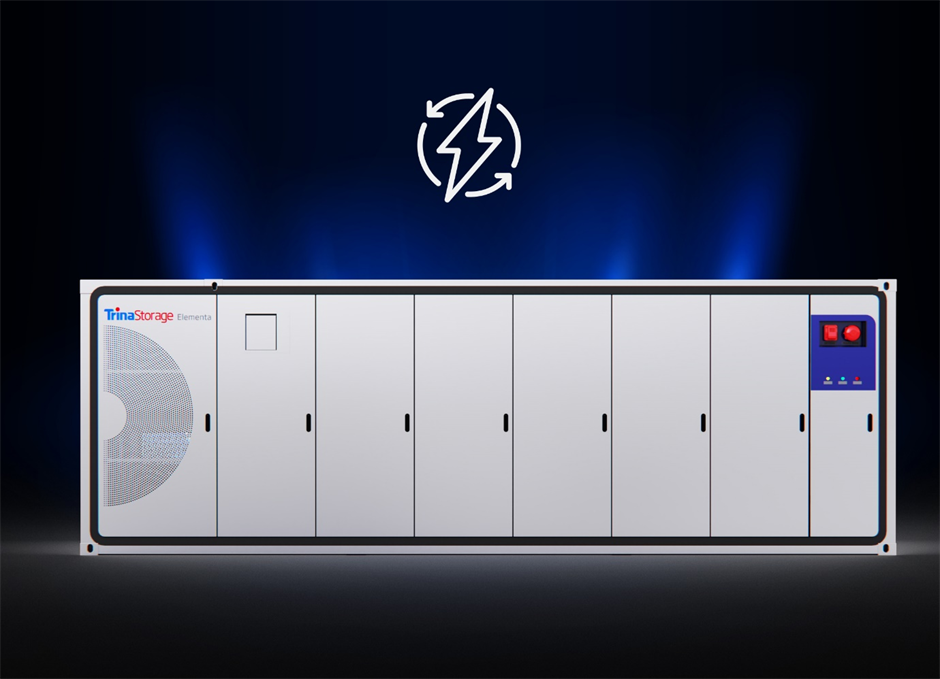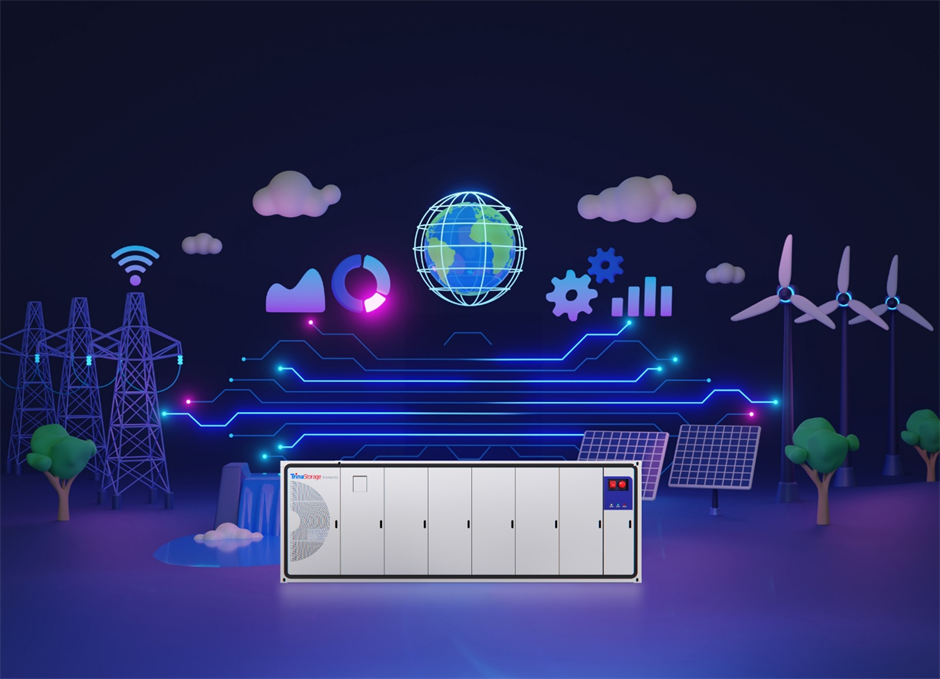Reshaping the Energy Landscape: The Impact of Energy Storage on the Power Grid
- 23/07/18
- Energy Storage
The way we generate and use energy is evolving rapidly and energy storage innovation is playing a key role in reshaping the power grid networks. As demand for electricity continues to grow, so does the need for reliable and efficient ways to store it that are also economically beneficial. In this article, we explore the impact of battery energy storage on the power grid; from why there’s a growing need for storage, to the wide-ranging benefits it offers for grid reliability and decarbonisation.
The growing need for energy storage solutions
Increasing energy demand and grid instability
The growing demand for electricity in our modern world is putting an increasing strain on our power grids. As more and more people move to cities and adopt new technologies, the demand for electricity is predicted to rise by up to 57% by 2050, according to the International Energy Agency. This means that our grids will be under increased pressure to supply reliable and stable power to consumers.
However, the power grid is not always equipped to handle this increased demand. Power outages, blackouts and brownouts are all too common in many parts of the world, causing massive disruptions to daily life and even economic losses.
The role of renewable energy sources
The push towards decarbonisation and the increased adoption of renewable energy sources like wind and solar power also require effective energy storage solutions. Renewable energy sources are typically intermittent, meaning that they generate electricity inconsistently throughout a 24 hour period. This can cause issues for grid operators, who must constantly balance the supply and demand of electricity.
Climate change and the push for decarbonisation
Another key driver behind the growth of energy storage systems is the push towards decarbonisation in order to combat climate change. Energy storage plays an important role in this transition by enabling a shift away from fossil fuels and towards renewable energy sources. It can also help to reduce greenhouse gas emissions by allowing energy to be generated and stored at times when renewable sources are most abundant.

Key components of battery energy storage
A BESS is a complex system of hardware and software that uses advanced technology and control systems to store and release electricity when required. Traditional grid networks don’t have similar storage capacity as they operate on a system of balance, meaning that the amount of electricity being produced (supply) must be equal to the amount of electricity being used (demand) at all times.
Here are the main components of a battery energy storage system:
-
Battery Management System (BMS)
The brain of the BESS. A BMS monitors and controls the batteries to ensure they operate safely and efficiently. It keeps track of important parameters like the state of charge (how much energy is left in the battery), voltage (the ‘pressure’ of the electricity), and temperature. If any of these parameters exceed their safe limits, the BMS can take corrective action to prevent damage to the batteries, like cutting off the charging or discharging process. -
Energy Management System (EMS)
This is the control centre of the BESS. It decides when to charge or discharge the batteries based on various factors such as the electricity demand, the supply from other power sources, the electricity price, and the state of charge of the batteries. Comprising both hardware and software; Trina Storage’s E²MS, specific to Elementa, is able to collect, analyse, and interpret real-time plus historic data from battery storage assets, enabling safe operations, informed decision making, optimising system performance as well as project returns.
E²MS combines more than a century of BESS design and operational experience to produce sophisticated evolutionary algorithms and intelligent control strategies, coupled with dedicated hardware interfaces, able to provide flexible solutions tailored to satisfy any customer needs. -
Inverters: Charging and Discharging
These processes are facilitated by devices called inverters. When charging, the inverter converts the incoming AC (alternating current) electricity from the grid into DC (direct current) electricity that the batteries can store. When discharging, the inverter does the opposite: it converts the DC electricity from the batteries into AC electricity that can be used by the grid. -
Thermal Management System
This part of the BESS keeps the batteries at an optimal temperature. Batteries can generate heat when they charge or discharge, and if they get too hot, they can be damaged or even catch fire. A generic thermal management system uses various methods to dissipate this heat and keep the batteries cool.
The all-new Elementa by Trina Storage leverages efficient multi-level thermal management that includes liquid cooling cells, uniformly managed liquid cooling plates for battery packs and a bi-directional liquid cooling system.

How energy storage systems improve the grid network
Balancing supply and demand
One of the key challenges in operating a power grid is maintaining a balance between electricity supply and demand. Traditionally, this has been achieved by adjusting the output of power plants. However, this approach is not always efficient or feasible, especially with the growing share of renewable energy sources that are inherently intermittent. Energy storage systems can absorb excess electricity when supply exceeds demand and release it when the situation is reversed, thus playing a vital role in grid balancing.
Energy shifting
Energy storage systems play a crucial role in energy shifting, effectively managing the supply-demand balance. They store excess energy generated during periods of low demand and release it during peak times. This process mitigates the need for additional peaking power plants, reduces strain on the grid, and ensures a consistent energy supply. By smoothing out these fluctuations, energy storage systems contribute to a more reliable and efficient grid network.
Supporting the integration of renewable energy
Energy storage is essential for integrating renewable energy sources like wind and solar into the power grid. These sources are clean and abundant, but their output is variable and difficult to predict. Energy storage can store the excess power generated during periods of strong wind or intense sunlight, and release it during calm or dark periods. This ability to smooth out the variability of renewables increases their value and makes it possible to achieve a higher share of renewables in our energy mix.

Grid resiliency and reliability
Energy storage can enhance the resiliency and reliability of the power grid. In case of a grid disturbance or failure, energy storage systems can provide backup power, helping to prevent or mitigate blackouts. They can also support a faster recovery of the grid network after a disturbance. They can also be used to form microgrids in rural areas that can operate independently of the main grid, providing a reliable power supply to local communities or critical facilities in case of a grid-wide blackout.
Grid services and market participation
Energy storage systems can participate in electricity markets and provide valuable services to the grid. These include frequency regulation, voltage control, congestion relief, and capacity services. By rapidly injecting or absorbing power, energy storage systems can respond to short-term imbalances and fluctuations in the grid, helping to maintain the stability of the grid frequency and voltage. They can also provide longer-term services such as capacity, contributing to the adequacy of the power system and ensuring that demand can be met at all times.
Economic efficiency
By improving the efficiency and flexibility of the power grid, energy storage can lead to significant economic benefits. It can reduce the need for peaking power plants, which are expensive to build and operate and are only used during periods of peak demand. It can also defer or avoid the need for costly upgrades to the grid infrastructure. Furthermore, by enabling a higher share of renewables, energy storage can contribute to energy cost savings and price stability.
Batteries also present a compelling business case in market participation. They can be leveraged for energy arbitrage, buying power when prices are low and selling when high. Batteries can also provide ancillary services like frequency regulation to the grid, creating additional revenue streams. This market participation enhances grid stability and introduces new opportunities for profit, making batteries an attractive investment in the energy sector.
Conclusion
Energy storage technology is playing a key role in reshaping the energy landscape and providing new solutions to the challenges facing the power grid. From providing stability and reliability to supporting the integration of renewable energy sources, energy storage has the potential to transform the way we generate and use electricity.
As we continue to face challenges related to climate change, growing energy demand and grid instability, battery energy storage systems will undoubtedly play an increasingly important role in shaping the future of the power grid.
Relevant Topics
Smart Energy Solutions
delivered straight to your inbox

